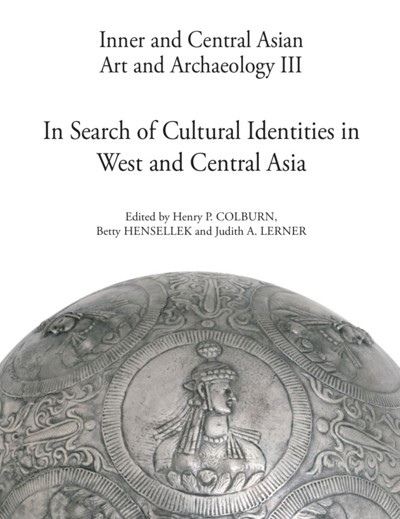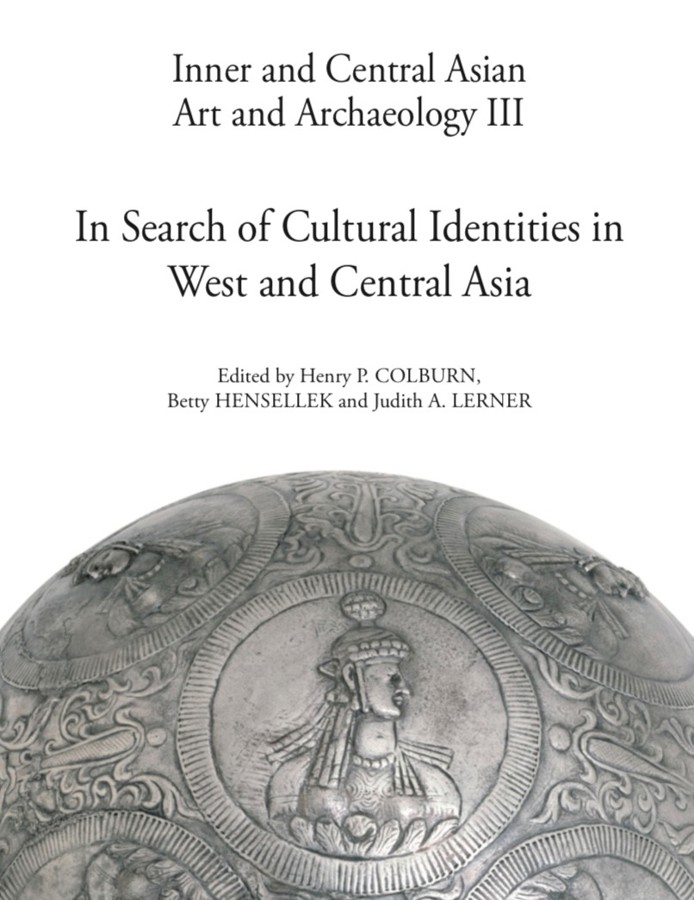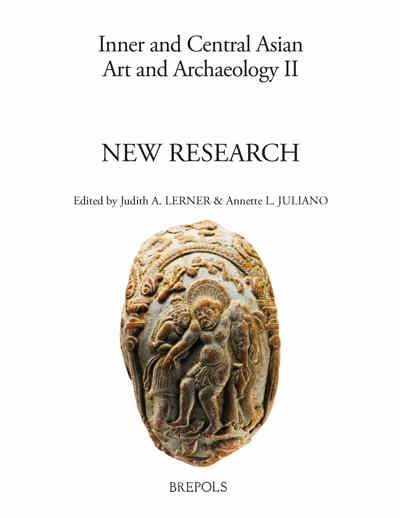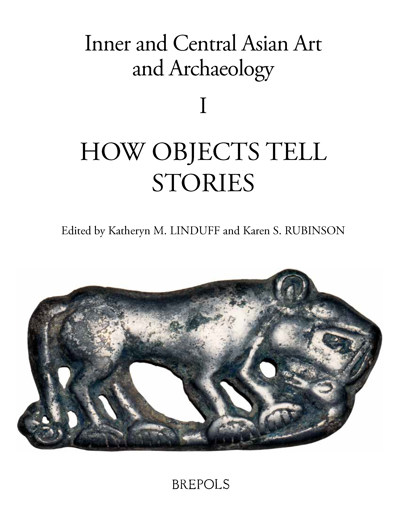
In Search of Cultural Identities in West and Central Asia
A Festschrift for Prudence Oliver Harper
Henry P. Colburn, Betty Hensellek, Judith A. Lerner (eds)
- Pages: 444 p.
- Size:216 x 280 mm
- Illustrations:111 b/w, 171 col., 0 tables b/w., 1 maps b/w, 4 maps color
- Language(s):English
- Publication Year:2024
- € 185,00 EXCL. VAT RETAIL PRICE
- ISBN: 978-2-503-60438-1
- Paperback
- Available
Betty Hensellek is an independent scholar whose research concerns the art and archaeology of Iran, Central Asia and the Steppe.
Judith A. Lerner is a Research Associate at the Institute for the Study of the Ancient World (NYU). Her interests include the visual cultures of pre-Islamic Iran and Central Asia as well as that of people from these regions who lived in China.
Henry P. Colburn is adjunct faculty at New York University, Hofstra University, and The Cooper Union for the Advancement of Science and Art. A scholar of ancient Greek, Egyptian and especially Persian art, his research focuses mainly on the Achaemenid and Parthian Empires.
How do we reconstruct ancient societies’ cultural and visual identities? Prudence Oliver Harper has dedicated her scholarly and curatorial career to piecing together the material culture of communities across ancient Western Asia, Iran, and Central Asia. A number of her colleagues – art historians, archaeologists, philologists, and conservators – have contributed essays to this volume to reflect Harper's range of contributions throughout her six-decade career. Many of the essays focus on ancient metalwork, Harper's major expertise, while others on glyptics, ivory, or glass, three of her other interests. The essays aim to make sense of this region's diverse cultural identities, many of which are the results of cross-cultural exchange. Some authors have employed iconographical or socio-historical approaches; others have complementarily opened new facets of cultural identities through technical and scientific analyses, collection history, and provenance research.
Kim Benzel (The Metropolitan Museum of Art)
Foreword
Judith A. Lerner (Institute for the Study of the Ancient World), Betty Hensellek (independent scholar) and Henry P. Colburn (New York University)
Prudence Oliver Harper: Curator and Scholar
Judith A. Lerner and Henry P. Colburn
Bibliography of Prudence Oliver Harper
Materials and Methods
Matteo Compareti (Capital Normal University, Beijing)
Textile Decorations in Sasanian Stucco Panels at Bandyan (Khorasan, Iran)
Georgina Herrmann (Institute of Archaeology, University College London, Emerita)
Bringing Order Out of Chaos: Connoisseurship as a Fundamental Tool
Pieter Meyers (Los Angeles County Museum of Art, Emeritus)
Bronze Casting in the Near East and Surrounding Areas
St John Simpson (The British Museum)
Sasanian Skeuomorphs: the Influence of Metalware on the Glass Industry
K. Aslihan Yener (The Oriental Institute, University of Chicago, Emerita; and Koç University, Emerita)
Silver for Justinian: Lead Isotope Analyses of Sixth- and Seventh-Century Silver Artifacts
Sasanian and Sogdian Silver
Betty Hensellek (Cornell Institute of Archaeology and Material Studies)
The Many Lives of the Silver Saiga Rhyton in the Metropolitan Museum of Art
Kate Masia-Radford (Independent Scholar)
Aquatic Imagery on Silverware Attributed to the Sasanian Period
Asadullah Souren Melikian-Chirvani (Independent Scholar)
The Enduring Memory of Iranian Antiquity in Islamic Iran
Nicholas Sims-Williams (School of Oriental and African Studies, Emeritus) and Bi Bo (Renmin University, Beijing)
A Silver Vessel with a Sogdian Inscription from Chach
Mediterranean and Central Asian Connections
Joan Aruz (The Metropolitan Museum of Art, Emerita) and Annie Caubet (Musée du Louvre, Emerita)
Central Anatolia and the Mediterranean: Art and the Materials of Interaction
Henry P. Colburn (New York University)
On the Date and Cultural Context of Aurel Stein’s Gilgit Rhyton
Anca Dan (Centre national de la recherche scientifique, and École Normale Supérieure, Paris) and Frantz Grenet (Collège de France, Paris)
Facing Dionysus at Silenus' Banquet in Tokharistan: A Possible Echo of a Greco-Roman Mystic Circle on a Fourth-Fifth Century "Bactrian" Silver Bowl in The al-Sabah Collection (LNS 1560M)
Judith A. Lerner (Institute for the Study of the Ancient World)
Thoughts on a Reused Roman Seal with a Middle Persian Inscription
Andrew Oliver (Independent Scholar, Washington, D.C.)
Fishing among the Flowers on a Roman Silver Cup
Holly Pittman (University of Pennsylvania)
Forerunners of Old Elamite Culture in Bronze Age Kerman
Karen S. Rubinson (Institute for the Study of the Ancient World)
Once More Identity at Tillya Tepe: the Iron Artifacts from Burial 2
History and Historiography
Carol Bier (Center for Islamic Studies, Graduate Theological Union, Berkeley; The Textile Museum, Emerita)
Professor Pope and Dr. Phyllis Ackerman: Carpets and the Study of Persian Textiles
Martha L. Carter (Independent Scholar)
Notes on the Creative Mind of Ardashir I
John E. Curtis (Iran Heritage Foundation; The British Museum, Emeritus) and Vesta Sarkosh Curtis (The British Museum)
A Statue from Hatra in the Basrah Museum
Anne Dunn-Vaturi (The Metropolitan Museum of Art)
Marie-Thérèse Dubalen and the Ancient Near Eastern Study Collection
Rika Gyselen (Centre national de la recherche scientifique, Paris, Emerita)
Yazd, une province de l’empire sassanide
Jens Kröger (Museum für Islamische Kunst, Emeritus)
Revisiting the Ctesiphon Excavations of 1928-29 and How the Met's Trustees Saved the Second Campaign in 1931-32



